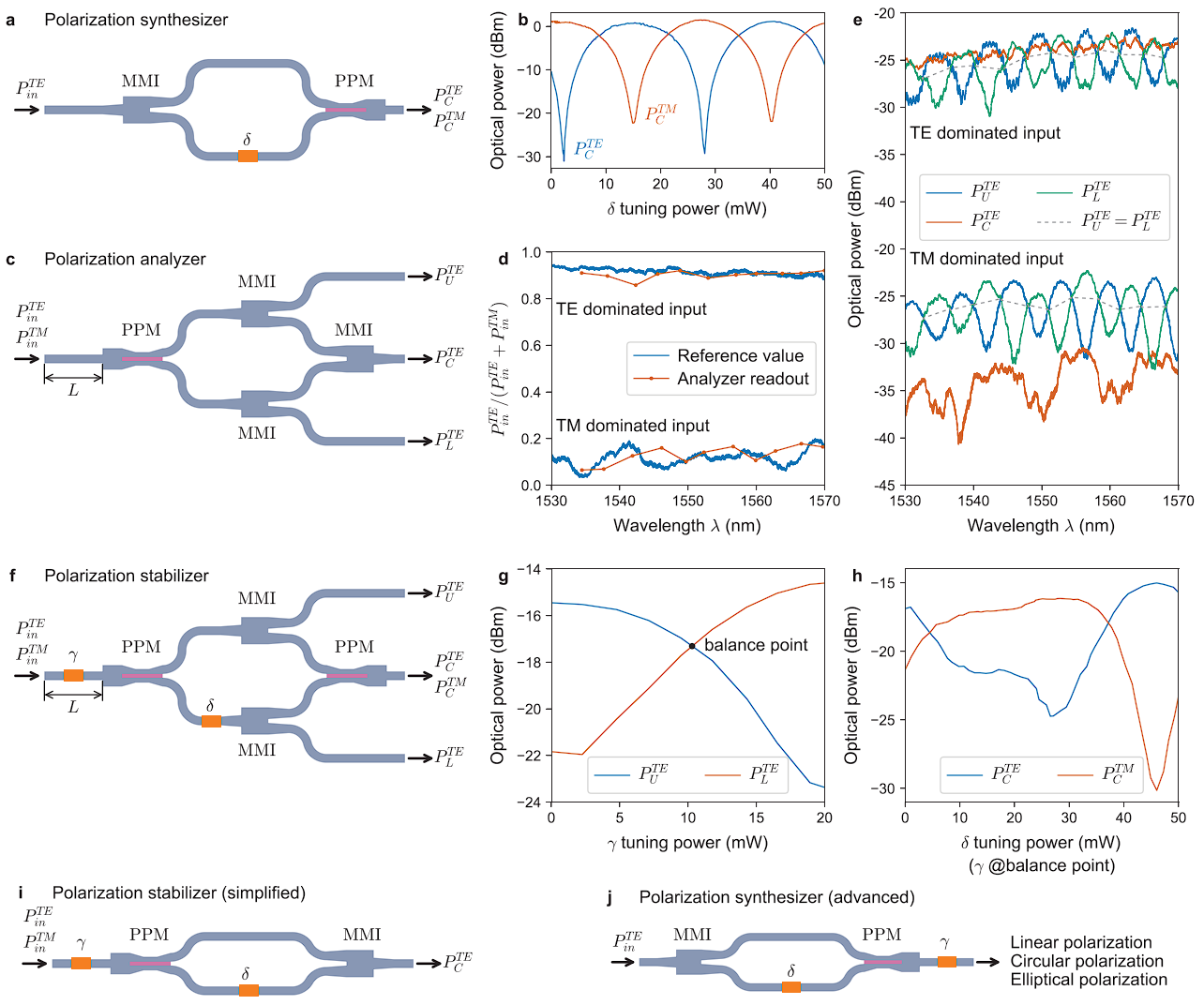Recently, the Center has made important progress in the research of on-chip polarization management. The research team proposed a new mechanism of polarization phase mapping, which enables efficient on-chip polarization management by regulating the phase difference between two beams of light. The mapping conversion between polarization and phase difference can be achieved by using a shallow-etched channel waveguide prepared by a CMOS standard process, which requires only 5.42 um. Based on this mechanism, the team implemented all on-chip polarization management functions, including rotation, beam splitting, synthesis, measurement, stabilization and mixing, on a silicon-based platform. The results were published on November 09, 2023, in the journal Laser & Photonics Reviews under the title "On-Chip Light Polarization Management by Mapping the Polarization Information to Phase Shift".

Screenshot of the article
Over the past decades, through the introduction of optical polarization management technology, optoelectronic systems have achieved breakthroughs in application scenarios such as high-capacity communications, highly sensitive sensing, seismic pre-regulation, and imaging analysis. In the future, optoelectronic systems will move toward full integration, but in the many efforts reported so far to realize system-level applications based on integrated optoelectronic chips, polarization management functions, due to the lack of mature architectures, the existence of large device sizes, low process tolerances, complex polarization regulation functions, and even the inability to use the standard silicon-on-optical process integration and many other problems, can often only be realized with off-chip fiber-based polarization components or devices. . How to achieve efficient on-chip polarization management is one of the key bottlenecks in promoting fully integrated on-chip optoelectronic systems.
In order to solve the above problems, the research team proposed a polarization phase mapping regulation mechanism, which encodes the polarization information as the phase difference between two beams of light, and then manages the polarization through phase regulation, realizing a breakthrough in the polarization regulation mechanism. Based on the proposed mapping mechanism, the research team has designed and prepared a polarization phase mapper (PPM) using a standardized silicon photoflow process, which can complete the efficient mapping transformation between polarization and phase in a shallow-etched channel waveguide with a length of only 5.42 um (shown in Fig. 1).

Fig. 1.(a) Schematic diagram of the polarization phase mapper
The designed polarization phase mapper not only overcomes the requirement of customized process of traditional polarization management devices, but also realizes the functions of polarization rotation, polarization beam splitting, polarization measurement, polarization stabilization, polarization synthesis, polarization multiplexing, and polarization mixing under very limited size, as shown in Fig. 2.

Fig 2. (a-b) Polarization synthesis (c-e) Polarization analysis (f-i) Polarization stabilization (j) Polarization synthesis
Further, based on the PPM, combined with the waveguide polarization birefringence effect, a broadband dual-polarization coherent mixer and receiver are designed and implemented, which can realize 180-degree phase mixing with the C-band phase error of less than 5° and the power inhomogeneity of less than 2 dB. The coherent demodulation and reception of 108 Gbps 16QAM signals have been realized and successfully applied to the real-time coherent communication system, which realizes low error code reception and demodulation and continuous stable operation without feedback intervention of the dual-polarization QPSK signals (Fig. 3).

Fig. 3. (a) Dual polarization coherent reception test system (b) PPM-based dual polarization coherent receiver (c) Coherent reception demodulation of QPSK/16QAM signals (d-e) BER curves of received signal
The co-first authors of the paper are Dr. Qingzhong Deng, 2017, College of Electronics, Peking University (now IMEC, Belgium), Dr. Ming Jin, 2022, former postdoctoral fellow of the Center, Jun Qin (now professor at Beijing University of Information Science and Technology), and Dr. Pengfei Sun, 2023. Dr. Qingzhong Deng, Prof. Zhiping Zhou and Prof. Xingjun Wang of the Center are the corresponding authors. The main collaborators include Hao-Wen Shu, researcher of the Center, Prof. Cheng Ju of Qingdao University, Dr. Pieter Neutens and Pol Van Dorpe Fellow of IMEC, Dr. Peiqi Zhou and General Manager Xi Xiao of the National Innovation Center for Information Optoelectronics; and Yuan-Sheng Tao, Zi-Han Tao, Bo Wang, Xuguang Zhang, Jingbo Shi, and Bo-Wen Bai, members of the Center. The above research was supported by the National Natural Science Foundation of China. This work was done by the State Key Laboratory of Regional Optical Fiber Communication Networks and Novel Optical Communication Systems, School of Electronics, Peking University as the first unit, and is an important result of the cooperation with Pengcheng Lab.
Link to original paper:
https://doi.org/10.1002/lpor.202300501

